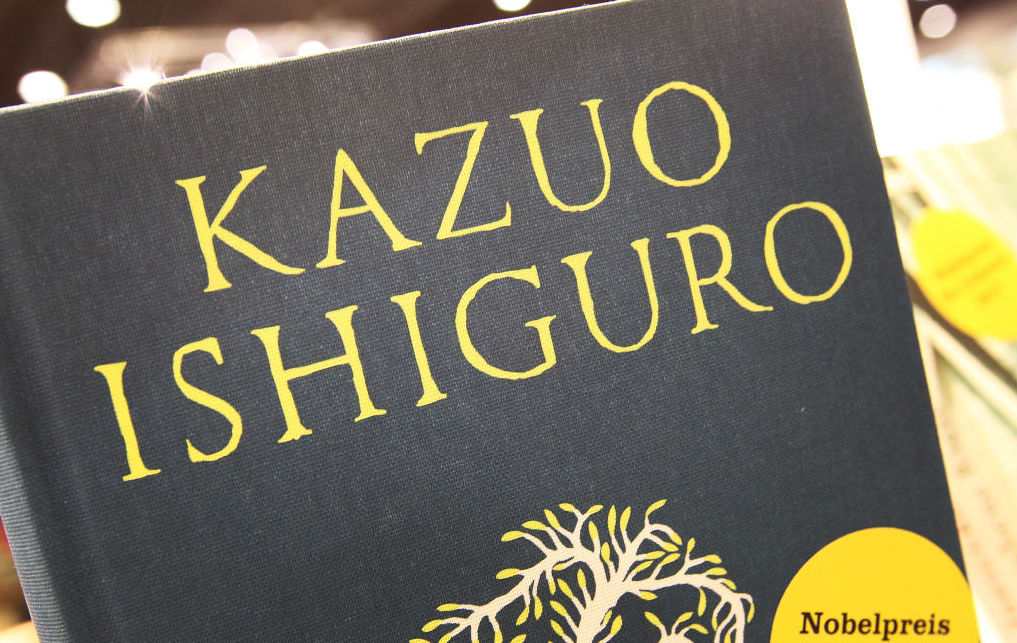When Kazuo Ishiguro first appeared on the literary scene in the 1980s, his work was often described using terms such as ‘exquisite’, ‘refined’ and ‘understated’. The supposedly Japanese sensibility of this Surrey-raised writer was on full display in his fine second novel An Artist of the Floating World (1986), narrated by a retired artist called Masuji Ono. What was less clear to English critics, perhaps, was that Ishiguro’s Japan was the imagined one of his grandparents—alongside traces of filmmaker Yasujirō Ozu’s family dramas—rather than one strictly drawn from observation. This novel’s formal perfection also disguised a much darker tale of the artist’s complicity with wartime fascism. It ends on a rare hopeful note: Ono sees that whatever mistakes Japan has made in the past, it ‘has now another chance to make a better go of things.’
The surface meaning of his novels rarely holds all the answers
Ishiguro’s next novel, The Remains of the Day (1989) showed that his perennial themes of memory, trauma and guilt were cross-cultural. Thinking back over his life, the emotionally repressed butler Stevens comes to better understand the political repression endorsed by his Nazi-sympathising master Lord Darlington. The novel also features one of the great unrequited love stories between Stevens and the housekeeper Miss Kenton, who always just fail to connect. The book deservedly won Ishiguro the Booker Prize. It was also made into a film originally scripted by Harold Pinter and then re-drafted by Ishiguro’s fellow Booker winner Ruth Prawer Jhabvala. Anthony Hopkins and Emma Thompson played the doomed non-lovers to perfection.
After his Booker success, Ishiguro was sent on an endless round of interviews in which he had to explain his work over and over again. He channelled that experience in his dream-like follow-up The Unconsoled (1995), which is either his masterpiece or a terribly failed experiment, according to taste. A pianist named Ryder arrives in a European city and encounters various people who all want something from him. He resists with the polite refrain: ‘I have a particularly tight schedule…’. As a reflection on the disorientating nature of success and the commodification of culture, it is powerful. But reading it can also feel like being set a puzzle with no solution.
The realist mask slipped again for 2005’s Never Let Me Go. Using the very English genre of the boarding school novel, he grafts on a sci-fi scenario of young people being harvested for their organs. Scenes of banal teenage life are shadowed by this terrible knowledge that, in a clever twist, is neither hidden from the reader or the characters. It is a fact of life—like death itself for us all. Like a lot of Ishiguro’s work, the reading experience can be disarmingly prosaic but once you finish the book it burrows into your soul, certain scenes haunting your dreams. Like the one where the teenage Kathy looks at pictures of naked women not out of sexual interest, but to see if she can spy the ‘possible’ from which she has been cloned.
Ishiguro’s first post-Nobel novel Klara and the Sun, which I reviewed in last week’s Spectator, again uses a sci-fi premise. The narrator Klara is an Artificial Friend or robot companion designed to help sick humans. Through the novel, Klara learns to become more human not through becoming more advanced, as such, but by making mistakes and learning to love. At the end there is a mystical revelation related to the Sun which can hardly be described as ‘understated. This being Ishiguro, though, the surface meaning doesn’t hold all the answers, and the novel has prompted multiple interpretations from reviewers and readers. It is part of Ishiguro’s uncanny power never to be easily pinned down—which is why he is so compelling a writer.






Comments